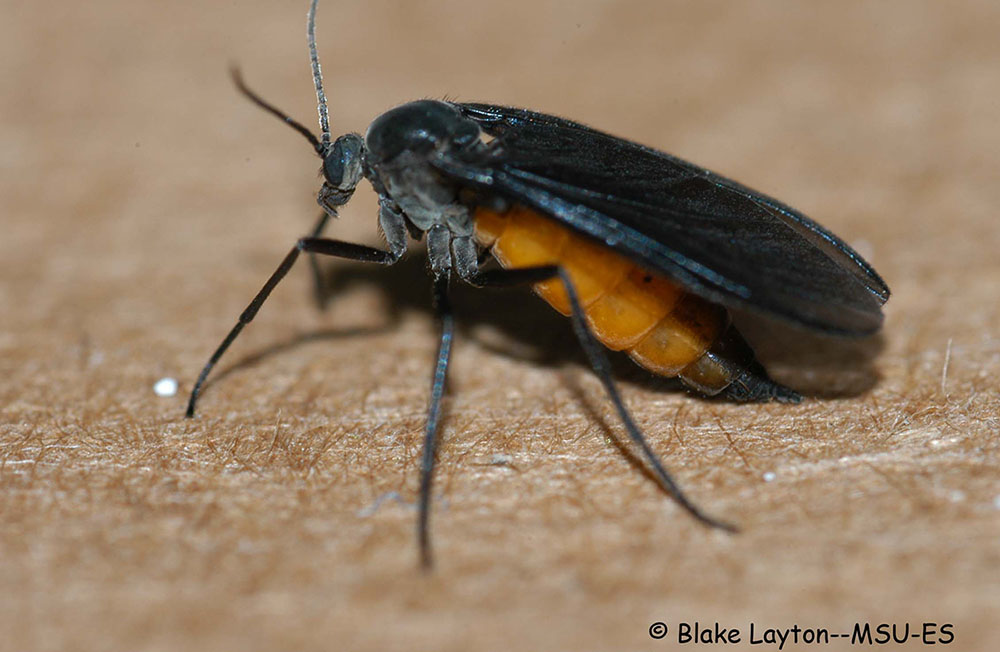Dark-winged Fungus Gnat, No 7

Dark-winged Fungus Gnat
Sciara spp.
Order: Diptera, Family: Sciaridae
We’ve got thousands of little black and orange flies around the outside of the house. What are they, and are they harmful? In late spring, especially following periods of heavy rainfall, we often see large flights of dark-winged fungus gnats. These little flies are about 3/16 inches long with black wings and bodies and orange abdomens. They are often mistaken for lovebugs, but lovebugs are larger and have an orange thorax (middle part of the body) and black abdomen. Dark-winged fungus gnat larvae feed on fungi and decaying organic matter in grass thatch, mulch, and other plant litter and are seldom seen. There are many other species of dark-winged fungus gnats, and some are pests whose larvae damage greenhouse-grown plants by feeding on the roots, but this particular species with the orange abdomen is more of a curiosity and minor nuisance.
Control: Control is rarely recommended. These flies do not bite or cause serious injury to landscape plants, and their flight period is relatively short. Adult flies only live a few days, long enough to mate and lay eggs. In situations where they are a nuisance because of large numbers accumulating in carports or on patios, a wet/dry vacuum may be a more effective remedy than an insecticide spray. If treatment is deemed necessary, pyrethroid insecticides containing active ingredients such as permethrin, cyfluthrin, or bifenthrin will kill flies that are contacted by the spray.
Blake Layton, Extension Entomology Specialist, Mississippi State University Extension Service.
The information given here is for educational purposes only. Always read and follow current label directions. Specific commercial products are mentioned as examples only and reference to specific products or trade names is made with the understanding that no discrimination is intended to other products that may also be suitable and appropriately labeled.

